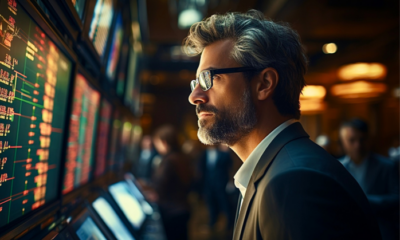Success Advice
To Take Your Startup From $0 to $1 Million, You Have to Get This Right
your business needs to work at the smallest unit level possible before you even think about scaling

According to the Bureau of Labor Statistics, small businesses make up 99.9 percent of the businesses in America. That’s impressive. What isn’t impressive, though, is that only 7 percent of them reach $1 million in revenue.
As disheartening as that statistic might be, there’s really only one reason why 93 percent of small businesses never reach the million-dollar mark. In almost every instance, the reason a small business struggles is that the entrepreneur or small business owner fails to get their unit-level economics right. (This term refers to your specific business’s revenues and costs as they relate to an individual unit.)
What does that mean for you as an entrepreneur and would-be empire builder? If you want to build a billion-dollar business—and ultimately, an empire—first you have to build the perfect million-dollar business. No, scratch that: first you have to build the perfect hundred-thousand-dollar business. In other words, your business needs to work at the smallest unit level possible before you even think about scaling.
Get It Right Small
I can’t tell you how many times I’ve heard entrepreneurs say, “I’ll figure out how to be profitable once I’m bigger.” That’s the mindset that gets small business owners into trouble. Get it right small—or walk away early, before you waste valuable time, money, and effort on a losing proposition.
If you aren’t sure how to do that, don’t worry. We’re going to walk through how to check your unit-level economics right now. For the purposes of example, we’ll use a landscape maintenance company, but the concept holds true for every kind of business in every kind of industry and every geographic market.
The first step to getting your unit-level economics right is to identify what they are. In our mythical landscape maintenance business, the unit-level economics—based on some lightly researched numbers—are the monthly payment, fuel costs, insurance costs, and maintenance reserves for one truck ($1,400), one fully burdened (includes wages and benefits) two-person crew ($8,736), and the operating costs of the equipment necessary to maintain your customers’ lawns: a commercial lawn mower, a blower, a weed whacker, some rakes, shovels, and so on ($400).
Build Your Mathematical Formula for Success
Now that we’ve identified those, we can build a mathematical formula for success. This formula is specifically focused on revenue and direct operating costs; it does not include capital expenditures or Sales and General Administration (SG&A) costs—you’ll factor those in later.
Add these numbers up, and you get your unit-level direct operating expenses: $10,536/month, or $126,432/year. Now, you need to ask yourself a question: Can I bring in enough revenue to cover my direct operating expenses while leaving enough gross profit to cover overhead and generate the minimum acceptable net profit?
Again, let’s use some lightly researched numbers to explore how you can find the answer to that question. For illustrative purposes and simplicity, this example assumes a warm climate where lawns are cut throughout the year. A typical crew can cut 15 lawns per day, at $50 per cut. Assuming an average of about 22 cutting days per month, the average monthly revenue per crew is approximately $16,500, and the average annual revenue per crew is approximately $198,000.
Subtract the annual unit-level direct operating cost ($126,432) from the annual average gross revenue ($198,000) to get the annual gross operating profit per crew. The answer: $71,568, or 36 percent. Now, deduct the SG&A (which includes your costs to manage the business, get customers, pay yourself, and so on). It should never be more than 20 percent, so let’s assume 20 percent, which will leave you with 16 percent in pretax net profit. The minimum pretax net profit percentage a business must achieve to be viable is 10 percent, so in this example, the unit-level economics seem to work.
“To build a successful business, you must start small and dream big.” — Aliko Dangote
Factor in the Variables
Of course, there are a lot of variable costs built into this formula. The cost of gasoline, insurance, and labor costs can go up, for example. So can the cost to service and operate your equipment. The revenue you can get per lawn can fluctuate, too, as can the number of lawns your crew can cut each day. You also need to account for bad weather days or times when a worker calls in sick.
All of these scenarios mean you need to be very diligent about monitoring your variable costs to ensure your unit-level economics remain sound. But ultimately, by getting the variables right and tracking the basic economics of your business at the very smallest level—in this case, the economics of running a business with one crew—you create the foundation from which you can build an empire.
Once you’ve perfected your operating formula, you can determine exactly how to scale to $1 million. Let me show you how to do this using the same numbers we came up with initially. Take your revenue goal ($1 million), and divide it by your annual revenue per crew ($198,000). That calculation returns an answer of 5.05, but since you can’t buy 0.5 of a truck or hire 0.5 of a crew, let’s round up to 6. So, you need 6 trucks and 12 employees to hit your revenue target.
Six trucks and 12 employees will bring in about $1,188,000 in revenue; $427,680 in gross profit; and $190,080 in pretax net profit. To hit your revenue targets, you will need 450 regular weekly customers.
Take Your Business to $1 Million
Again, these numbers are just to illustrate the fundamental concept. The bottom line is that success is tied to your unit-level economics.
Get your formula right at the smallest level, and you will be well on your way to ensuring your small business is one of the 7 percent that reach the million-dollar milestone. Get it wrong, though—or fail to consider it at all because you assume profitability is tied to how big your business is—and chances are high that your business will fail to reach the million-dollar mark…and may even fail altogether.
For more advice on how to take your business from $0 to $1 million and beyond, you can find Empire Builder on Amazon.
Did You Know
How Skilled Migrants Are Building Successful Careers After Moving Countries
Behind every successful skilled migrant career is a mix of resilience, strategy, and navigating systems built for locals.

Moving to a new country for work is exciting, but it can also be unnerving. Skilled migrants leave behind familiar systems, networks, and support to pursue better job opportunities and a better future for their families. (more…)
Life
10 Research-Backed Steps to Create Real Change This New Year
This New Year could finally be the one where you break old patterns and create real, lasting change.

Every New Year, we make plans and set goals, but often repeat old patterns. (more…)
Change Your Mindset
The Silent Skill That Makes People Respect You Instantly
What truly earns respect and why most people go about it the wrong way

Everybody craves respect but not everyone earns it. Some people believe that a title, years of experience, or a position of authority automatically entitles them to respect. (more…)
Entrepreneurs
The Essential Skills Every Entrepreneur Needs In 2026
Success in the digital age isn’t about luck. It’s about mastering the skills that separate dreamers from doers.

When I was 22 years old, I started my first side hustle as a ghostwriter. (more…)
-

 Business4 weeks ago
Business4 weeks agoWhy Your E-Commerce Fulfilment Is Probably Broken (And How to Fix It)
-

 Shift Your Mindset3 weeks ago
Shift Your Mindset3 weeks ago11 E’s That Define Every Great Leader And Why Most People Miss Them
-

 Did You Know3 weeks ago
Did You Know3 weeks agoThe Success Patterns You Inherited (And Didn’t Notice)
-

 Business3 weeks ago
Business3 weeks agoThe Hidden Money Pit in Your Operations (and How to Use It)
-

 Entrepreneurs2 weeks ago
Entrepreneurs2 weeks agoThe Essential Skills Every Entrepreneur Needs In 2026
-

 Change Your Mindset2 weeks ago
Change Your Mindset2 weeks agoHow to Turn Your Mind Into Your Greatest Asset (Instead of Your Enemy)
-

 Change Your Mindset1 week ago
Change Your Mindset1 week agoThe Silent Skill That Makes People Respect You Instantly
-

 Life6 days ago
Life6 days ago10 Research-Backed Steps to Create Real Change This New Year


























